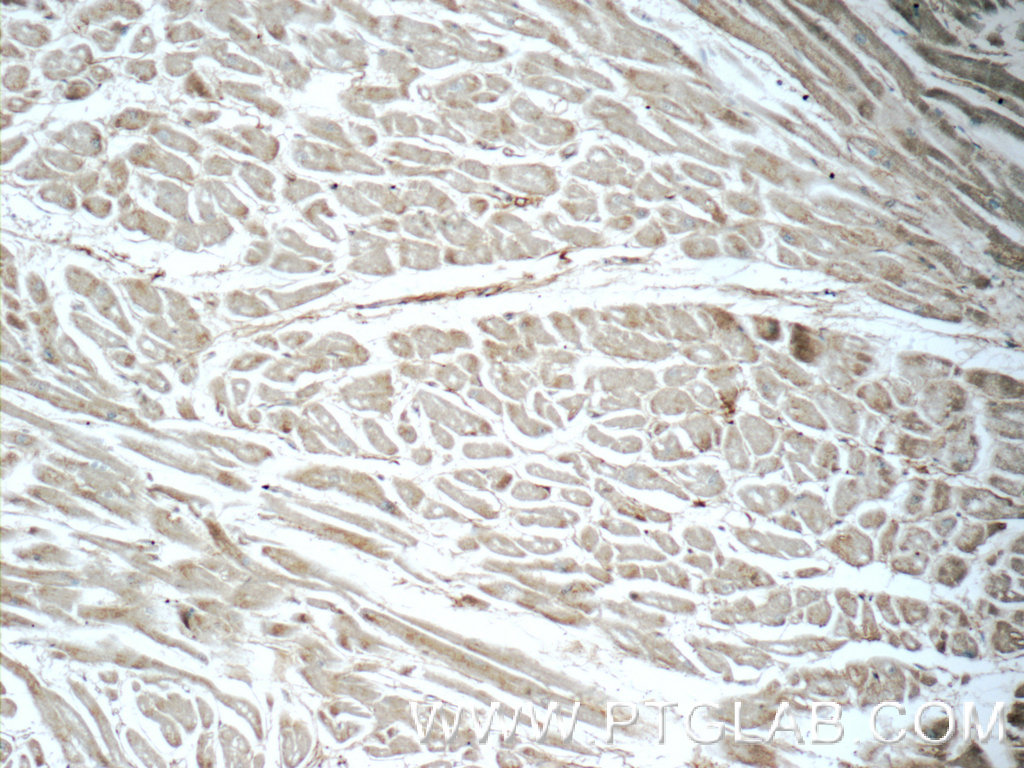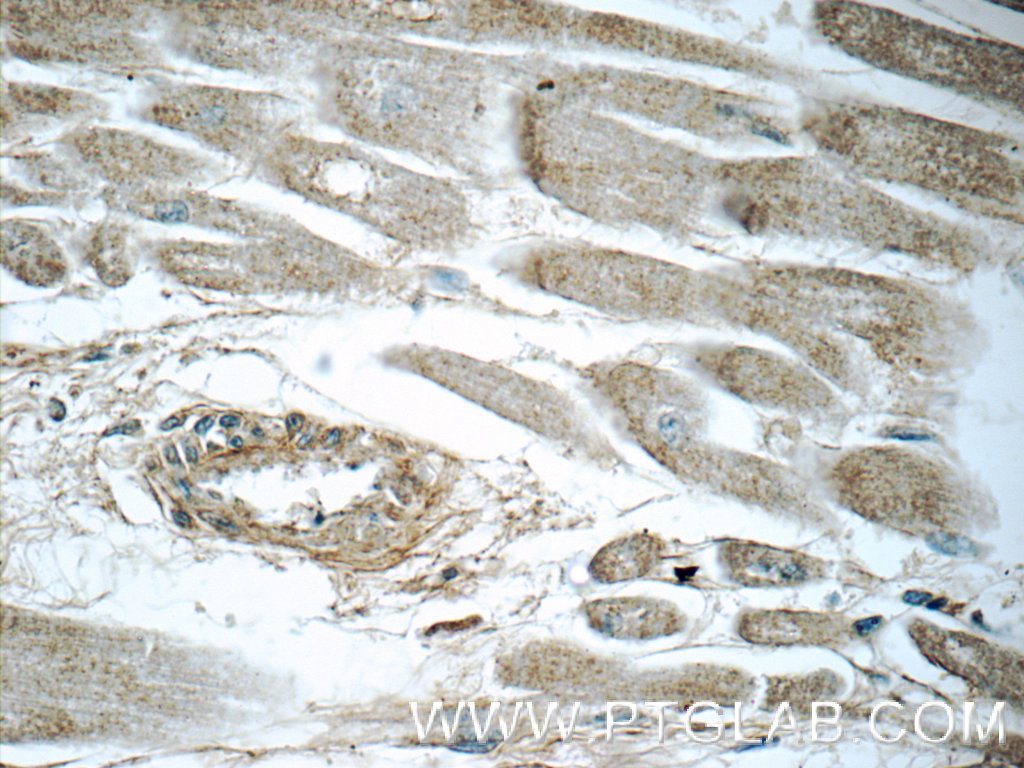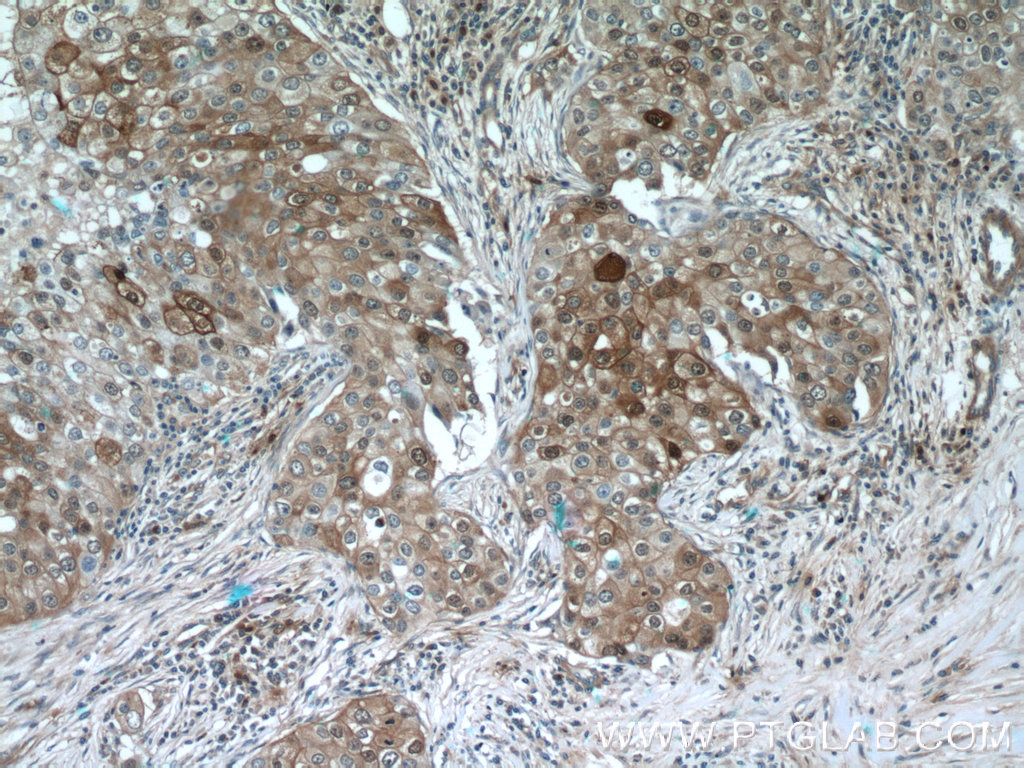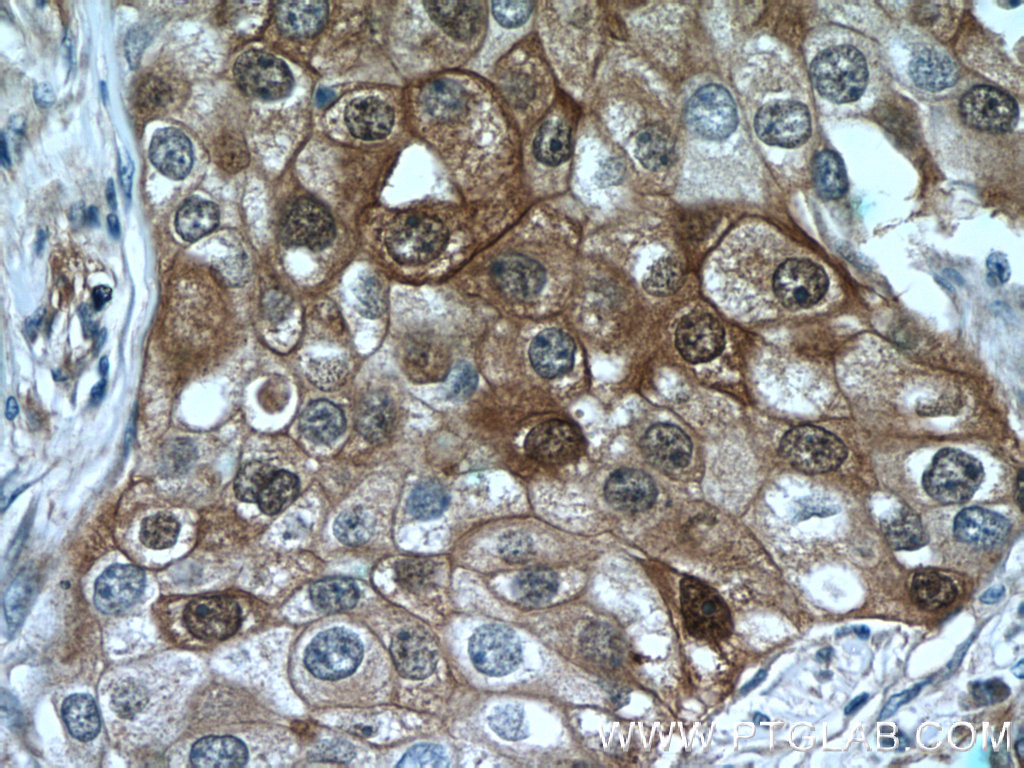验证数据展示
经过测试的应用
| Positive IHC detected in | human heart tissue, human breast cancer tissue Note: suggested antigen retrieval with TE buffer pH 9.0; (*) Alternatively, antigen retrieval may be performed with citrate buffer pH 6.0 |
推荐稀释比
| 应用 | 推荐稀释比 |
|---|---|
| Immunohistochemistry (IHC) | IHC : 1:20-1:200 |
| It is recommended that this reagent should be titrated in each testing system to obtain optimal results. | |
| Sample-dependent, Check data in validation data gallery. | |
产品信息
55137-1-AP targets LTB4R in IHC, ELISA applications and shows reactivity with human samples.
| 经测试应用 | IHC, ELISA Application Description |
| 经测试反应性 | human |
| 免疫原 | Peptide 种属同源性预测 |
| 宿主/亚型 | Rabbit / IgG |
| 抗体类别 | Polyclonal |
| 产品类型 | Antibody |
| 全称 | leukotriene B4 receptor |
| 别名 | BLT, BLT1, BLTR, CMKRL1, G protein coupled receptor 16, GPR16, leukotriene B4 receptor, Leukotriene B4 receptor 1, LTB4 R 1, LTB4 R1, LTB4R, LTB4R1, LTBR1, P2RY7, P2Y purinoceptor 7, P2Y7 |
| 计算分子量 | 38 kDa |
| GenBank蛋白编号 | NM_181657 |
| 基因名称 | LTB4R |
| Gene ID (NCBI) | 1241 |
| RRID | AB_2881275 |
| 偶联类型 | Unconjugated |
| 形式 | Liquid |
| 纯化方式 | Antigen affinity purification |
| UNIPROT ID | Q15722 |
| 储存缓冲液 | PBS with 0.02% sodium azide and 50% glycerol , pH 7.3 |
| 储存条件 | Store at -20°C. Aliquoting is unnecessary for -20oC storage. |
背景介绍
Leukotriene B4 receptor 1 (LTB4R, also know as LTB4R1 or BLTR) is a G-protein coupled receptor for leukotriene B4, a potent chemoattractant that is primarily involved in inflammation, immune responses and host defence against infection (PMID: 9177352). LTB4R is highly expressed in human leukocytes and is involved in the regulation of the inflammatory system.
实验方案
| Product Specific Protocols | |
|---|---|
| IHC protocol for LTB4R antibody 55137-1-AP | Download protocol |
| Standard Protocols | |
|---|---|
| Click here to view our Standard Protocols |



